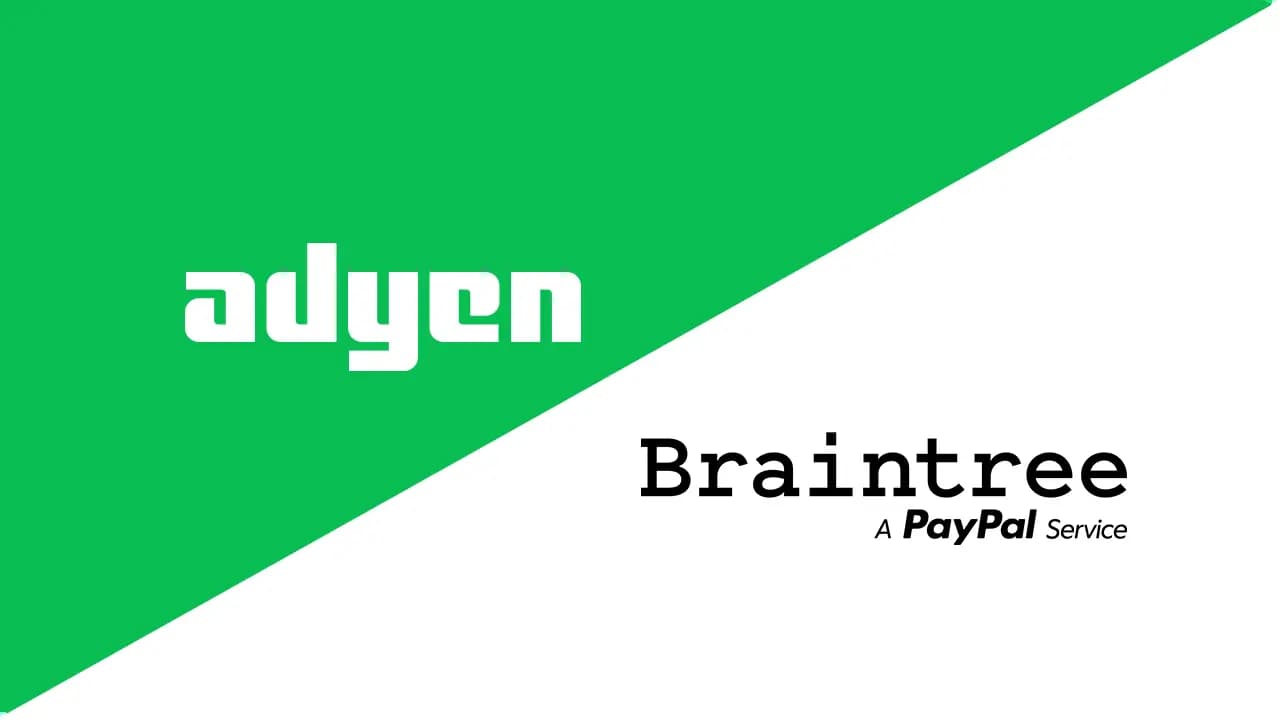
Stripe vs Square: Choosing the Right Payment Platform for Your Business (2025)
When selecting a payment processing solution, the choice between Stripe and Square represents a fundamental decision about your business model and growth trajectory. These two industry leaders approach payment processing from distinctly different angles: Stripe prioritizes developer flexibility and global scalability, while Square focuses on simplicity and comprehensive business management tools. Understanding which platform aligns with your specific needs—whether you’re building a custom e-commerce experience or managing a physical storefront—will determine not just your payment processing costs but your entire operational efficiency and expansion capabilities.
Key Takeaways
- Target Market Alignment: Stripe excels for online-first businesses requiring customization and international reach, while Square dominates brick-and-mortar operations with integrated POS solutions
- Pricing Competitiveness: Both platforms charge similar rates (2.9% + $0.30 for online transactions), but Square offers better value for high-volume in-person sales at 2.6% + $0.15
- Technical Requirements: Stripe requires more technical expertise for full customization, whereas Square provides intuitive, no-code business management tools
- Scalability Considerations: Stripe processed $1.4 trillion globally in 2024 with a presence in 46 countries, while Square focuses on 8 markets with $228 billion processed annually
Payment Solution Type Overview
Both Stripe and Square operate as payment service providers (PSPs), but they represent different evolutionary paths in payment processing technology.
All-in-one payment ecosystems combine payment processing with comprehensive business management tools, targeting merchants who want integrated solutions for inventory, staff management, customer relationships, and financial operations. These platforms prioritize ease of use and quick deployment.
Developer-centric payment platforms focus on providing flexible APIs and customizable payment experiences, allowing businesses to build tailored solutions that integrate seamlessly with existing systems. These platforms emphasize technical sophistication and global scalability.
Stripe Overview
Stripe is a suite of APIs powering online payment processing and commerce solutions for internet businesses of all sizes, enabling businesses to accept payments and scale faster with AI-powered tools. Founded in 2010 by Patrick and John Collison, Stripe has evolved from a simple payment gateway into a comprehensive financial infrastructure platform serving millions of businesses worldwide.
What Is Stripe?
Stripe is a cloud-based software platform that facilitates online payment processing for businesses of all sizes, acting as an intermediary that securely transmits customer payment information to the appropriate financial institutions. As of 2025, Stripe is valued at $91.5 billion and holds a 20.8% market share in payment processing software, making it the world’s second-largest payment processor.
The platform serves as the payment infrastructure for 62% of Fortune 500 companies and 45% of U.S. e-commerce businesses, processing transactions for companies ranging from startups to enterprise-scale organizations like Amazon, Shopify, and Uber.
How Does Stripe Work?
Stripe operates through a sophisticated API-first architecture that developers can integrate with just seven lines of code. When a customer initiates a payment, Stripe’s system handles the entire transaction flow:
- Payment Capture: Customer payment details are securely captured through Stripe’s checkout interface or custom implementations
- Processing: Stripe processes more than 500 million API requests daily, routing transactions through optimal payment networks
- Security: All data is encrypted and processed according to PCI DSS Level 1 certification requirements
- Settlement: Funds are typically available within two business days, with instant payouts available for a 1% fee
Stripe’s AI-powered optimization continuously retrains machine learning models to improve authorization rates and reduce fraud, with businesses seeing measurable revenue increases when switching to the platform.
Stripe Features and Pricing
Stripe Features
Stripe offers an extensive range of features, including:
- Online payment processing: Secure payment gateway for web and mobile transactions
- Subscription billing: Automated recurring payment management with flexible billing cycles
- Mobile payments: Native support for Apple Pay, Google Pay, and mobile-optimized checkout
- Fraud prevention: Machine learning-powered fraud detection with customizable rules
- Payment analytics: Comprehensive dashboard with transaction insights and reporting
- Multi-currency support: Accept payments in 135+ currencies with automatic conversion
- Developer tools: Extensive APIs, SDKs, and documentation for custom integrations
- Marketplace payments: Split payment functionality for multi-party transactions
Stripe Pricing
Stripe offers transparent pricing with no monthly fees or setup costs for standard accounts:
- Online transactions: 2.9% + $0.30 per successful charge
- In-person transactions: 2.7% + $0.05 per transaction
- International cards: Additional 1% fee
- Currency conversion: 1% fee for currency conversion
Stripe also offers custom pricing for high-volume businesses and enterprise clients, with rates negotiable based on transaction volume and specific requirements.
Stripe’s Strengths and Weaknesses
Strengths of Stripe
- Global Reach: Available in 46 countries with support for 135+ currencies
- Developer Experience: Industry-leading API design with comprehensive documentation
- Scalability: Processes over $1.4 trillion annually with 99.9999% uptime during peak periods
- Innovation: Continuous investment in AI, fraud prevention, and emerging payment technologies
Weaknesses of Stripe
- Technical Complexity: Requires development resources for full customization
- Limited POS Hardware: Minimal in-person payment hardware compared to competitors
- Higher International Fees: Additional 1.5% for international transactions
- Chargeback Fees: $15 chargeback fee compared to Square’s free dispute management
Who Benefits the Most From Stripe?
Stripe Is Best For
- E-commerce and SaaS Companies: Businesses requiring sophisticated recurring billing and usage-based pricing
- International Merchants: Companies selling across multiple countries and currencies
- High-Volume Processors: Enterprises processing $1+ billion annually (100+ such customers)
- Developer-Led Organizations: Teams wanting to build custom payment experiences
Ideal Use Cases For Stripe
- Marketplace platforms managing complex multi-party payments
- Subscription businesses with dynamic pricing models
- Global brands requiring localized payment methods
- API-first companies building integrated financial services
Note: 80% of the largest software companies in the United States used Stripe as of 2024, demonstrating strong adoption in the technology sector.
Square Overview
Square is a point-of-sale (POS) system for sellers with physical or online stores, launched in 2009 by Block, Inc., enabling merchants to accept card payments and manage business operations. As of 2024, Square is the U.S. market leader in point-of-sale systems, serving 4 million sellers and processing $228 billion annually.
What Is Square?
Square is a payments platform that allows businesses to accept card payments and use smartphones, tablets, or computers as payment registers for a point-of-sale system. Beyond payment processing, Square has evolved into a comprehensive business ecosystem offering inventory management, staff scheduling, customer relationship tools, and banking services.
How Does Square Work?
Square’s approach centers on simplicity and integration across all business functions:
- Payment Acceptance: In-person payments via tap, dip, or swipe at 2.6% + 15¢ per transaction
- Business Management: Integrated inventory tracking, staff management, and customer data
- Financial Services: Same-day or next-day deposits directly to Square business accounts
- Analytics: Real-time sales reporting and business insights
Square’s ecosystem approach means all services work seamlessly together, from processing payments to managing payroll and tracking inventory.
Square Features and Pricing
Square Pricing
- Free Plan: $0/month with 2.6% + 15¢ for in-person payments
- Plus Plan: $89/month with discounted processing fees
- Premium Plan: Custom pricing for high-volume businesses
Square Transaction Fees
- In-person payments: 2.6% + 15¢
- Online payments: 2.9% + 30¢
- Manually entered payments: 3.5% + 15¢
- Invoices: 3.3% + 30¢ for cards, 1% minimum $1 for ACH
Hardware Options
- Free magstripe reader with signup
- Contactless & chip reader: $49
- Square Terminal: All-in-one device with touchscreen
- Square Register: Complete POS system with cash drawer
Square’s Strengths and Weaknesses
Strengths of Square
- Ease of Use: Setup can be completed in a single afternoon without technical expertise
- Comprehensive Ecosystem: Integrated payroll, inventory, marketing, and banking services
- No Hidden Fees: Transparent pricing with no monthly fees, PCI compliance fees, or setup costs
- Superior POS Hardware: Wide array of purpose-built POS and KDS hardware
Weaknesses:
- Limited Global Presence: Available in only 8 countries compared to Stripe’s 46
- Higher Fees for Complex Transactions: Flat-rate pricing can be expensive for high-volume businesses
- Limited Customization: Less flexibility for custom payment experiences
- Currency Limitations: USD processing only for U.S. accounts
Who Benefits the Most From Square?
Square Is Best For
- Brick-and-Mortar Retailers: Stores requiring integrated POS systems with inventory management
- Restaurants and Food Service: Food and beverage businesses account for 37% of Square Online sales
- Service-Based Businesses: Salons, fitness studios, and professional services needing appointment scheduling
- Small Business Owners: Entrepreneurs wanting all-in-one solutions without technical complexity
Ideal Use Cases For Square
- Pop-up shops and mobile vendors requiring portable payment solutions
- Multi-location businesses needing centralized management
- Businesses requiring integrated payroll and team management
- Companies wanting comprehensive customer loyalty programs
Note: Food and beverage businesses account for 37% of Square Online sales, making this a particularly strong vertical for the platform.
Financial & Market Insights
Market Position: Stripe holds a 20.8% market share in payment processing software globally, processing $1.4 trillion in payment volume during 2024. The company’s $91.5 billion valuation as of May 2025 reflects its position as the fourth most valuable private company globally.
Square processed $209.6 billion in payments during 2023, generating $7.68 billion in revenue, while maintaining its position as the U.S. market leader in point-of-sale systems. Block (Square’s parent company) was added to the S&P 500 in July 2025, highlighting its maturation as a major financial services provider.
Growth Trajectories: Stripe’s 38% year-over-year growth in payment volume demonstrates continued expansion, particularly in AI-powered startups reaching $5 million ARR 13 months faster than traditional software companies. Square’s GPV reached $210 billion in 2025 with Cash App surpassing 58 million monthly active users.
Investment and Innovation: Stripe has raised a total of $9.81 billion in funding and continues to make significant R&D investments, particularly in AI and fraud prevention. Square’s innovation focuses on expanding Tap-to-Pay support to 90% of Android models and implementing blockchain technology for cross-border settlements.
Feature Comparison
| Feature | Stripe | Square |
|---|---|---|
| Billing & Invoicing | ✅ | ✅ |
| Currency Support | ✅ | ❌ |
| Customizable Branding/White Label | ⚠️ | ⚠️ |
| Deployment Options | ✅ | ✅ |
| Fraud Prevention Tools | ✅ | ✅ |
| Integration Capabilities | ✅ | ✅ |
| Management Tools | ✅ | ⚠️ |
| Payment Types Support | ✅ | ✅ |
| Reconciliation Tools | ✅ | ✅ |
| Reporting & Data Analysis | ✅ | ✅ |
| Security/Compliance | ✅ | ✅ |
| Smart Routing | ✅ | ⚠️ |
| Split Payments | ✅ | ✅ |
| Supported Payment Methods | ✅ | ✅ |
| Tokenization | ✅ | ✅ |
| Vaulting | ✅ | ✅ |
Note: ⚠️ indicates partial or limited features.
Final Summary & Recommendation
Key Reasons to Choose Stripe
- Your business operates internationally or plans global expansion
- You have development resources and need customized payment experiences
- You operate a marketplace, SaaS platform, or complex subscription business
- You require advanced features like usage-based billing or multi-party payments
- You process high volumes and can benefit from custom enterprise pricing
Key Reasons to Choose Square
- You operate primarily in-person retail, restaurant, or service businesses
- You need an all-in-one solution without technical complexity
- You want integrated inventory, staff management, and business banking
- You prefer transparent pricing without custom contracts
- You value comprehensive customer support and easy setup
The Bottom Line: Stripe is best for online-first businesses with global ambitions requiring technical flexibility, while Square excels for brick-and-mortar and service businesses needing comprehensive, user-friendly business management tools. Your choice should align with your technical capabilities, business model, and growth trajectory rather than solely on processing fees, as both platforms offer competitive transaction rates within their respective specializations.
For businesses requiring both online and in-person capabilities, consider your primary channel and growth direction. The platform you choose will influence not just payment processing, but your entire operational infrastructure and scaling possibilities.





